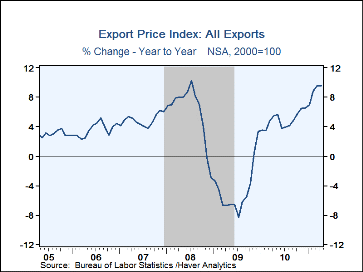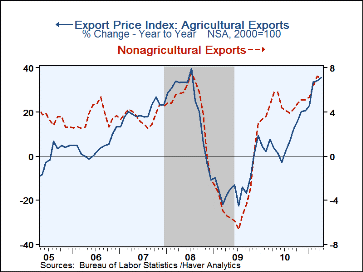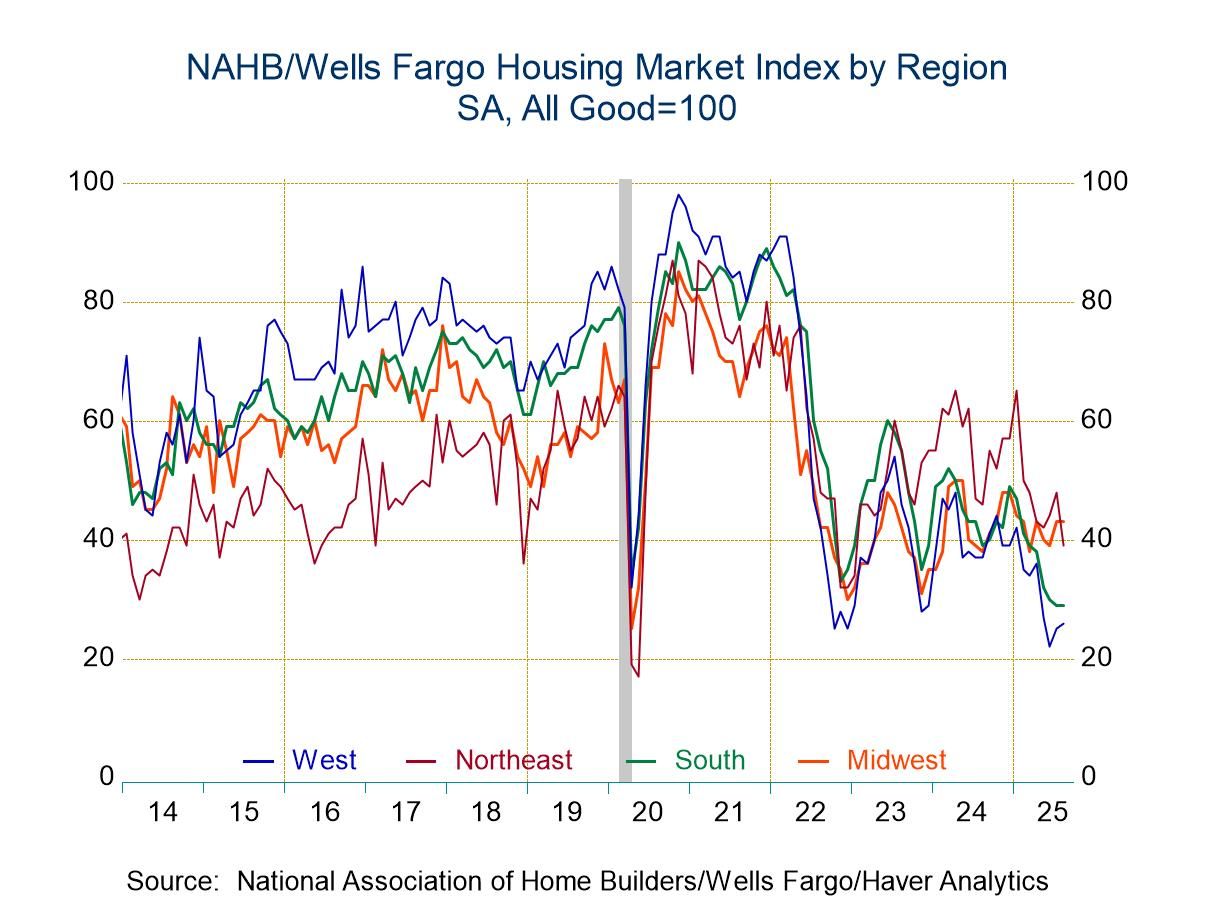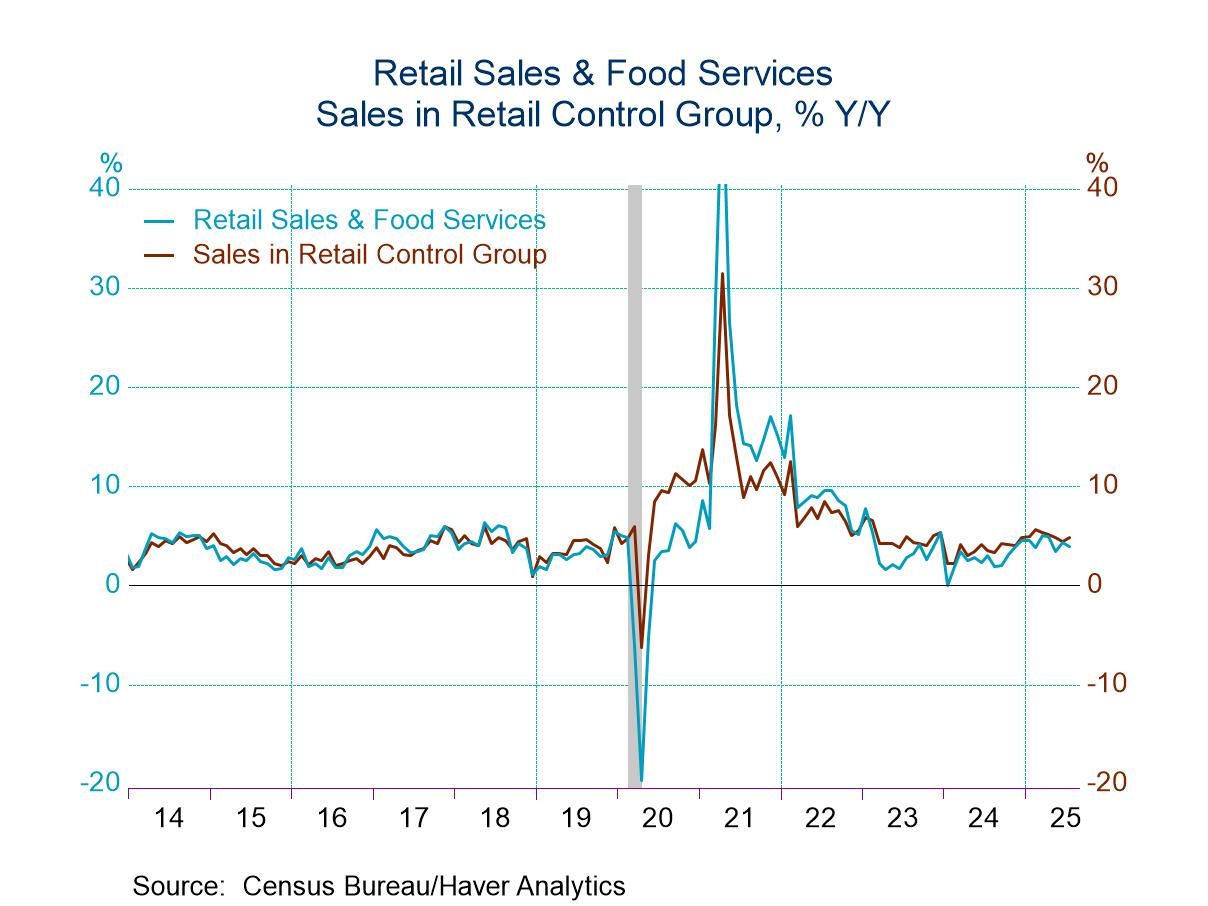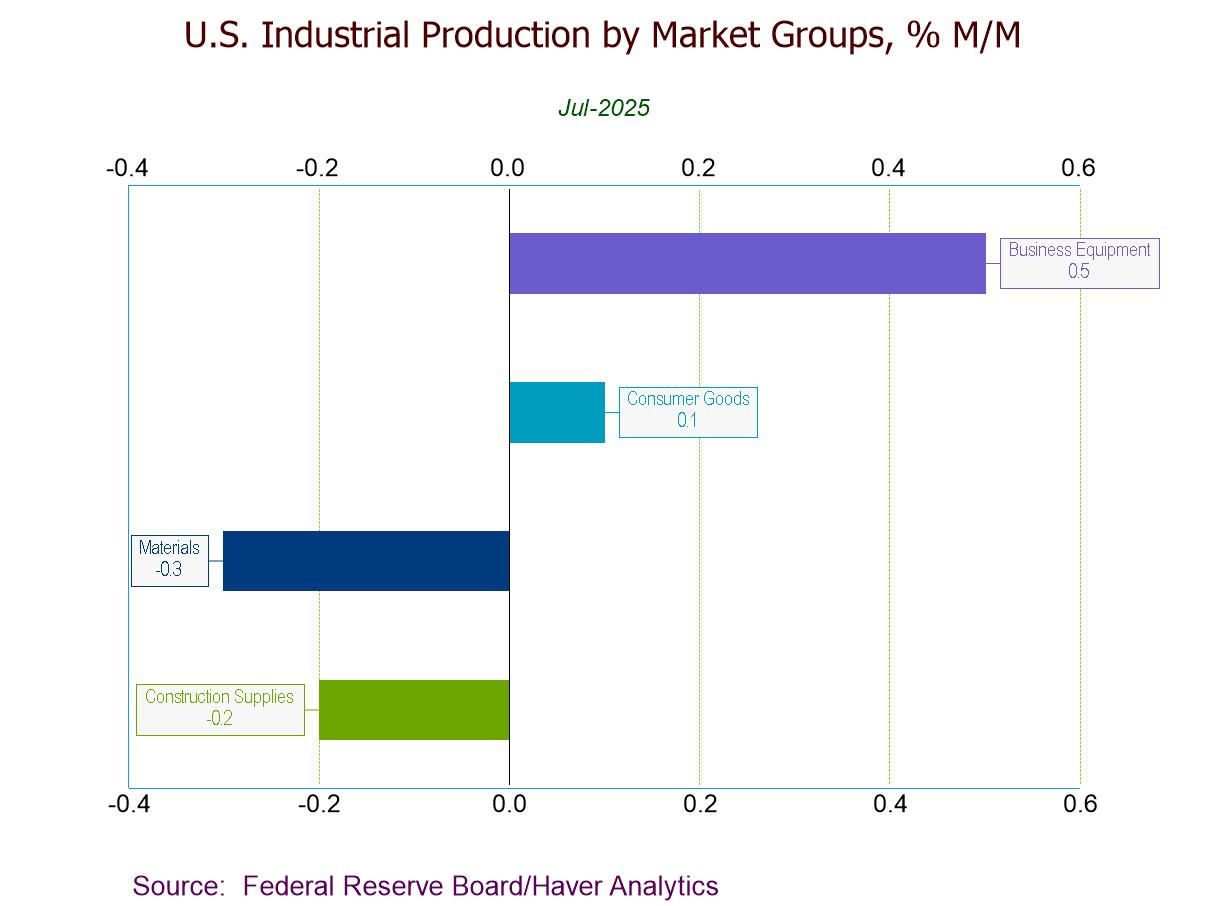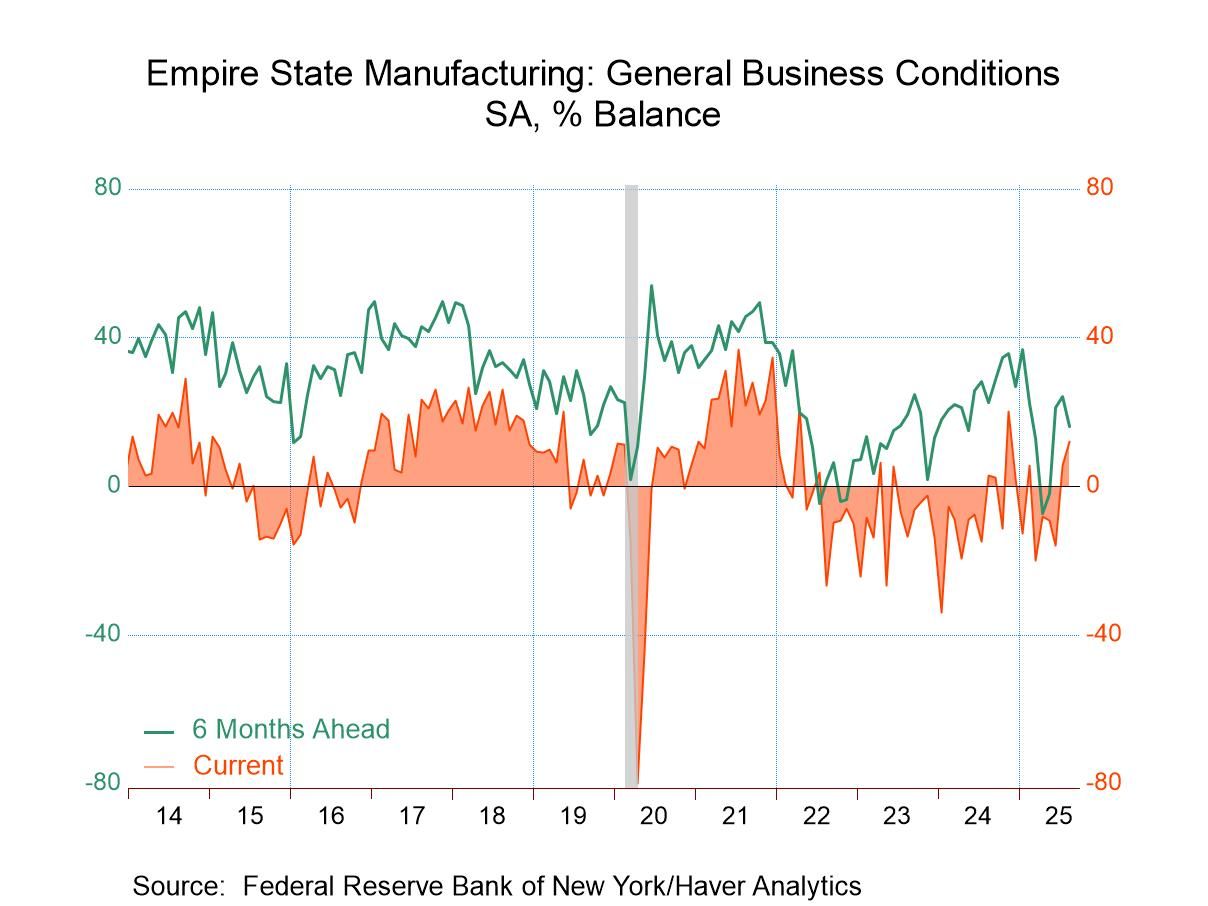 Global| May 10 2011
Global| May 10 2011U.S. Import & Export Prices Continue Strong
by:Tom Moeller
|in:Economy in Brief
Summary
Pricing strength amongst internationally traded U.S. products has been pronounced this year and last. Overall U.S. import prices last month jumped another 2.2% after a little-revised 2.6% March increase. The gain was stronger than [...]
Pricing strength amongst internationally traded U.S. products has been pronounced this year and last. Overall U.S. import prices last month jumped another 2.2% after a little-revised 2.6% March increase. The gain was stronger than Consensus expectations for a 1.8% rise.
It's no news that petroleum price strength continued last month. The 7.2% gain in oil import prices raised them more than one-third above last year as Brent crude oil rose to an average $122.68 per barrel (44.8% y/y). Also strong were non-oil import prices which rose 0.6% and 4.3% y/y as weakness in the dollar's value continued. (The y/y change in non-oil import prices during the last ten years has had an 81% inverse correlation with the nominal trade-weighted exchange value of the US dollar vs. major currencies.)
Earlier strength in imported food & beverage prices continued with a 1.8% April increase (19.6% y/y). Prices for nonoil industrial supplies jumped 1.3% (12.0% y/y). Elsewhere there was less strength as prices for non-auto consumer goods rose 0.4% (0.6% y/y). Apparel prices rose 1.0% (6.2% y/y) and furniture prices rose 0.7% (3.3% y/y) but home entertainment equipment prices declined 1.1% and by 10.7% y/y. Imported auto prices rose 0.4% (1.8% y/y) while imported capital goods prices ticked up 0.1% (1.0% y/y). Computer & peripherals prices slipped 0.5% during April (-3.8% y/y) but excluding computers, capital goods prices rose 0.4% (3.0% y/y).
U.S. export prices again were strong with a 1.1% gain (9.6% y/y). The strength reflected a more than one-third y/y increase in agricultural prices. Non-agricultural goods prices also were strong with a 1.0% gain (6.9% y/y). Strength has been notable for industrial supplies, up 20.5% y/y, and non-auto consumer goods (3.2% y/y).
The import and export price series can be found in Haver's USECON database. Detailed figures are available in the USINT database. The expectations figure is in the AS1REPNA database
| Import/Export Prices (NSA, %) | Apr | Mar | Feb | Apr Y/Y | 2010 | 2009 | 2008 |
|---|---|---|---|---|---|---|---|
| Imports - All Commodities | 2.2 | 2.6 | 1.7 | 11.1 | 6.9 | -11.5 | 11.5 |
| Petroleum | 7.2 | 9.8 | 5.5 | 36.8 | 28.4 | -35.9 | 37.7 |
| Nonpetroleum | 0.6 | 0.4 | 0.7 | 4.3 | 2.8 | -4.1 | 5.3 |
| Exports - All Commodities | 1.1 | 1.5 | 1.4 | 9.6 | 4.9 | -4.6 | 6.0 |
| Agricultural | 0.6 | 2.2 | 4.6 | 35.3 | 7.9 | -12.8 | 21.6 |
| Nonagricultural | 1.0 | 1.4 | 1.0 | 6.9 | 4.6 | -3.7 | 4.5 |
Tom Moeller
AuthorMore in Author Profile »Prior to joining Haver Analytics in 2000, Mr. Moeller worked as the Economist at Chancellor Capital Management from 1985 to 1999. There, he developed comprehensive economic forecasts and interpreted economic data for equity and fixed income portfolio managers. Also at Chancellor, Mr. Moeller worked as an equity analyst and was responsible for researching and rating companies in the economically sensitive automobile and housing industries for investment in Chancellor’s equity portfolio. Prior to joining Chancellor, Mr. Moeller was an Economist at Citibank from 1979 to 1984. He also analyzed pricing behavior in the metals industry for the Council on Wage and Price Stability in Washington, D.C. In 1999, Mr. Moeller received the award for most accurate forecast from the Forecasters' Club of New York. From 1990 to 1992 he was President of the New York Association for Business Economists. Mr. Moeller earned an M.B.A. in Finance from Fordham University, where he graduated in 1987. He holds a Bachelor of Arts in Economics from George Washington University.




